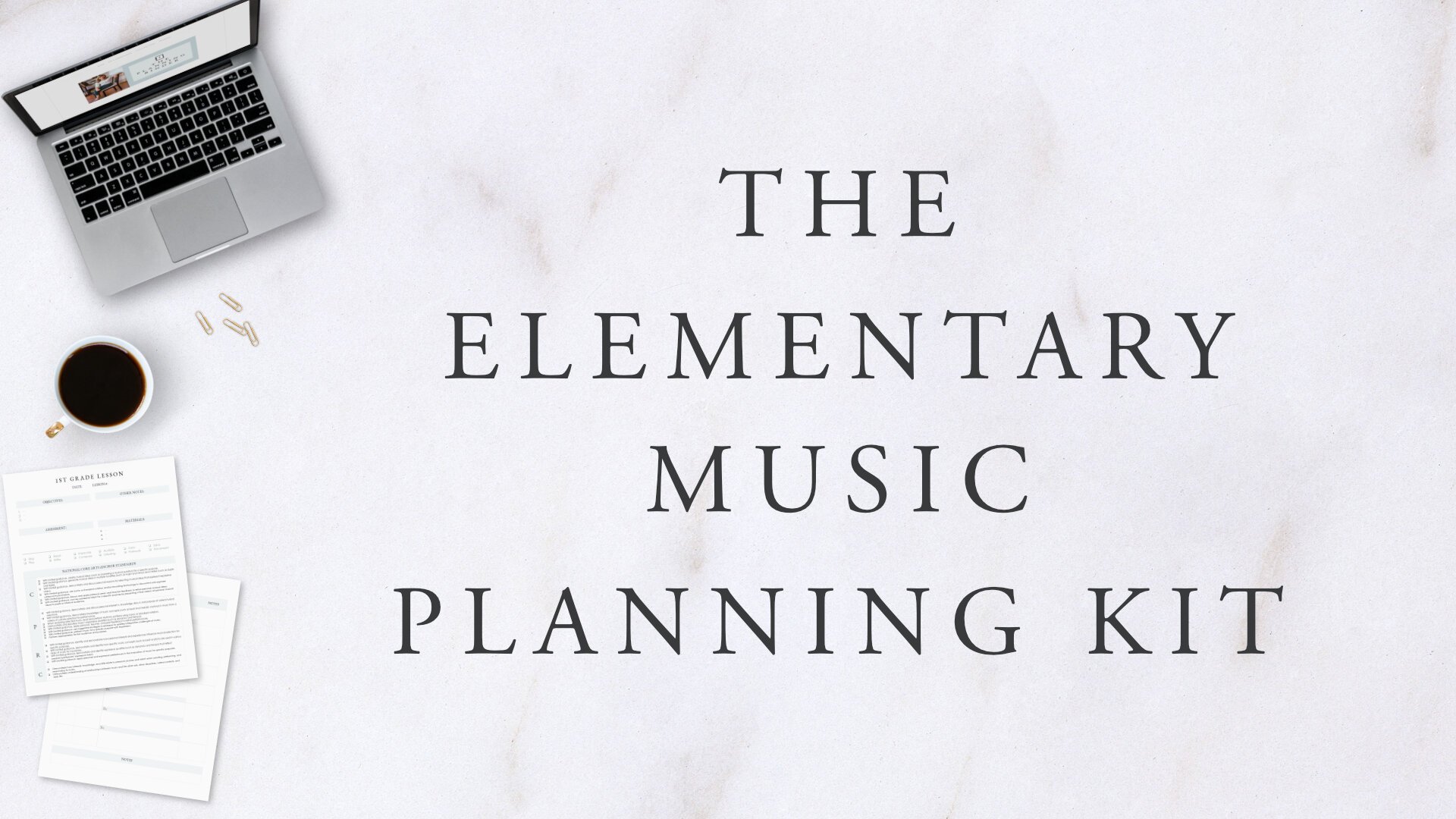A Scope and Sequence for Elementary Music
It’s so easy for many of us to fall into the trap of waiting for the “perfect” time to plan the year.
At the time of this post, educators are facing challenging realities when it comes to planning lessons. This experience may illustrate that there is not a “perfect” time guaranteed in education.
There’s never a bad time to think carefully and creatively about your goals for your students, and how best to implement them.
I would suggest that wherever you are in your year, it is the perfect time to start planning! Here’s an approach that answers the question, “When should I teach concepts in my year?”
How to Know What to Teach:
The answers to all other curriculum questions begin with your philosophy of music education. Planning is simply the process of applying your philosophy in tangible ways in the classroom.
A curriculum outline maps out how your philosophy will be applied throughout your program.
You can read more about a curriculum outline here.
When to teach it:
The next step in planning is to decide when you’ll teach the concepts from the Curriculum Outline. That is where a scope and sequence comes in.
You can find detailed examples of Scope and Sequences in The Planning Binder or inside the Elementary Music Planning Kit.
Scope and Sequence
A scope and sequence is your plan for what to teach throughout the year.
There are lots of ways you could format your own scope and sequence. This is the format that works for me, and the one available in The Planning Binder.
How is it Different from a Curriculum Outline?
A Scope and Sequence is built on the Curriculum Outline, but it gives an expanded picture.
A Curriculum Outline is an overview of your whole program. It’s amazing for looking at your entire music program at a glance.
A Scope and Sequence is an overview of each specific grade level, and exactly when they will consciously experience each concept. It has more details, and it’s a more practical way to track lesson content across the academic year.
Writing Your Own Scope and Sequence
I go into detail about how to write a scope and sequence in The Elementary Music Planning Kit, and in The Planning Binder.
However, you can also make your own from scratch!
If you're making your own template from scratch instead of purchasing The Elementary Music Planning Kit, start by listing the months you teach along the left hand side of the page. Then, along the top, write all the concepts you want to cover for that particular grade level.
Give yourself some breathing room in the schedule to accommodate things like sick days, bad weather, assemblies on Friday afternoons, field trips, and concert prep.
The Plan Will Change:
The other thing educators know from our current experience is that the plan is always subject to change!
A scope and sequence will save you time when the plan changes. This is because it is much easier to adapt an existing plan than it is to constantly generate a new plan from scratch.
You can read more about a scope and sequence inside The Elementary Music Planning Kit, or inside The Planning Binder.




